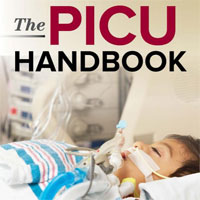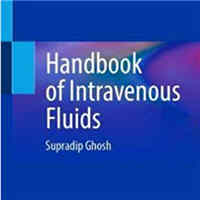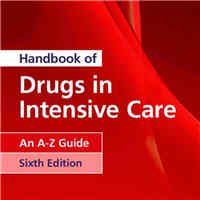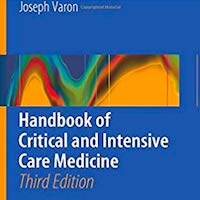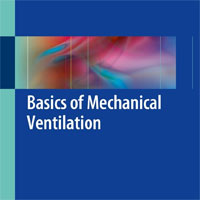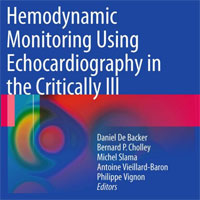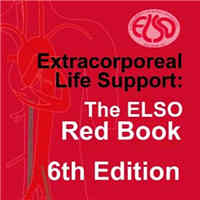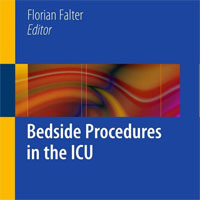Tag: trauma
No Benefits For Using 4-Factor Prothrombin Complex Concentrate (4F-PCC) in Trauma Patients
Early administration of 4-factor prothrombin complex concentrate (4F-PCC) was of no benefit to patients with trauma at risk of massive transfusion, the randomized PROCOAG trial from France showed. Among over 300 patients... read more
Continuous Positive Airway Pressure Usage During COVID-19
We confirm that use of early continuous positive airway pressure (CPAP) with high-flow output combined with an "ad hoc" algorithm to inform the decision to intubate is a valid and safe strategy for respiratory support in... read more
Trauma Group Publishes Action Plan, Makes Data Available for Secondary Analyses
The American College of Surgeons (ACS) has long advocated for the creation of a US National Trauma System to improve quality of care, decrease inequities, and save lives as one of its top legislative priorities, part of which... read more
Evaluation of abdominal compression-decompression combined with chest compression CPR performed by a new device
Compression–decompression cardiopulmonary resuscitation (CO-CPR) was more beneficial than standard cardiopulmonary resuscitation (STD-CPR) in terms of survival benefits in patients who have suffered out-of-hospital cardiac... read more
Trauma-induced Coagulopathy
Trauma is a major cause of mortality worldwide, and bleeding is the leading preventable cause of death. About one-quarter of patients with severe trauma develop a clotting disorder termed trauma-induced coagulopathy (TIC)... read more
Advanced Bleeding Control in Combat Casualty Care
Consensus was reached on the contents of a standard bleeding control toolbox, where it should be available, providers and training requirements, international registries and guidelines, and potential indications for REBOA... read more
High Rate of PICS Among SICU Survivors
Through the successful implementation of a multidisciplinary critical care outpatient clinic (CCOC), this study identifies an exorbitant rate of postintensive care syndrome (PICS) among surgical intensive care unit (SICU)... read more
Developing a Decision Instrument to Guide Abdominal-pelvic Imaging of Blunt Trauma Patients
Although computed tomography (CT) of the abdomen and pelvis (A/P) can provide crucial information for managing blunt trauma patients, liberal and indiscriminant imaging is expensive, can delay critical interventions, and... read more
Trauma, Eighth Edition
Hailed by readers and reviewers for its expert authorship and high-yield clinical content, Trauma is unquestionably the field's definitive text. Enhanced by a full-color design and a high-quality atlas of anatomic drawings... read more
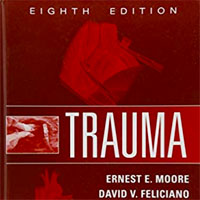
Multiple Organ Dysfunction in Older Major Trauma Critical Care Patients
Frailty rather than chronological age appears to drive multiple organ dysfunction syndrome (MODS) development, recovery, and outcome in older cohorts. Early identification of frailty after trauma may help to predict MODS... read more
Majority of Family Members of COVID-19 Patients Treated in the ICU Report PTSD Symptoms
A majority of family members of COVID-19 patients treated in ICUs reported significant symptoms of post-traumatic stress disorder in the following months, according to a study published Monday that sheds new light on the... read more
Damage Control in Trauma Care: An Evolving Comprehensive Team Approach
This book describes current, evidence-based guidelines for damage control interventions across the field of trauma care with the aim of enabling clinicians to apply them to best effect in daily clinical practice. Emphasis... read more
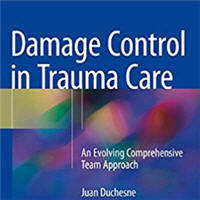
Why Are We Still Talking about ICP and Ketamine?
A trauma patient required emergent intubation during a recent shift. The altered patient was suspected of having an intracranial bleed. My resident was concerned about rapid onset of hypoxia and other internal injuries causing... read more
Resuscitation with Blood Products in Patients with Trauma-related Hemorrhagic Shock Receiving Prehospital Care
The trial did not show that prehospital PRBC–LyoPlas resuscitation was superior to 0·9% sodium chloride for adult patients with trauma related hemorrhagic shock. Further research is required to identify the characteristics... read more
Balanced Fluid Resuscitation for the Critically-Ill: the PLUS study mirrors the BaSICS
Intravenous fluid therapy is one of the most commonly-performed interventions in all of critical care medicine. Numerous trials over the last 20 years have attempted to identify the ideal fluid for those in the intensive... read more
Leriche Syndrome Diagnosed Due to Polytrauma
In this case, conservative therapy was initially chosen for Leriche syndrome. However, the complex factors in the acute phase of trauma led to development of hemorrhagic necrosis, requiring amputation of the lower extremity.... read more
Point of Care Ultrasound Made Easy
Point of Care Ultrasound Made Easy is an exciting and innovative book that aims to teach all healthcare professionals how to do simple and clinically relevant ultrasound scanning at the point of care. This book will help... read more
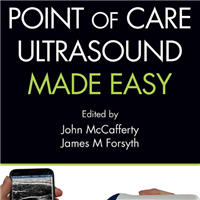
Procalcitonin in the ED: The evidence
Is procalcitonin of any value in the emergency department? Considering that procalcitonin testing is not available in any of my hospitals, I have never been all that interested in this question. But Swami requested a procalcitonin... read more
Cluster ICU Treatment Strategies for TBI by Hospital Treatment Preferences?
Although correlations between treatment policies within domains were found, the failure to cluster hospitals indicates that a specific treatment choice within a domain is not a proxy for other treatment choices within or... read more
Predicting Outcomes in Pediatric Trauma Patients Using rSI Multiplied by GCS
Reverse shock index multiplied by Glasgow Coma Scale outperformed SI and shock index pediatric age-adjusted (SIPA) in the early identification of traumatically injured children at risk for early interventions, such as blood... read more
The Small Percutaneous Catheter vs. Large Open Chest Tube For Traumatic Hemothorax
Small caliber 14-Fr PCs are equally as effective as 28- to 32-Fr chest tubes in their ability to drain traumatic HTX with no difference in complications. Patients reported better IPE scores with PCs over chest tubes,... read more
High resuscitative endovascular balloon occlusion of the aorta procedural volume is associated with improved outcomes
Resuscitative endovascular balloon occlusion of the aorta survival is increased at high versus low utilization centers. Increased experience with REBOA may be associated with earlier deployment and subsequently improved patient... read more


